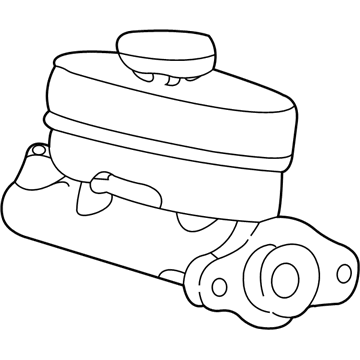FordParts
My Garage
My Account
Cart
OEM 2000 Lincoln Navigator Brake Master Cylinder
- Select Vehicle by Model
- Select Vehicle by VIN
Select Vehicle by Model
orMake
Model
Year
Select Vehicle by VIN
For the most accurate results, select vehicle by your VIN (Vehicle Identification Number).
1 Brake Master Cylinder found
2000 Lincoln Navigator Master Cylinder Part Number: YL1Z-2140-AC
Product Specifications- Other Name: Cylinder Assembly - Master; Brake Master Cylinder
- Replaces: YL1Z-2140-AA
- Base No.: 2140
- Item Weight: 3.70 Pounds
- Item Dimensions: 10.9 x 6.3 x 8.2 inches
- Condition: New
- Fitment Type: Direct Replacement
- SKU: YL1Z-2140-AC
- Warranty: This genuine part is guaranteed by Ford's factory warranty.
2000 Lincoln Navigator Brake Master Cylinder
If you're seeking quality and affordability, look no further than our extensive inventory of genuine 2000 Lincoln Navigator Brake Master Cylinder available at FordPartsDeal.com. You can confidently purchase our OEM 2000 Lincoln Navigator Brake Master Cylinder as they are supported by the manufacturer's warranty and our hassle-free return policy, alongside the benefit of our fast delivery service.
2000 Lincoln Navigator Brake Master Cylinder Parts Q&A
- Q: How to bench bleed the brake master cylinder safely and effectively on 2000 Lincoln Navigator?A: Your first step in bench bleeding the brake master cylinder must include staying safe by not touching brake fluid that contains polyglycol ethers and polyglycols because following contact you need to wash your hands thoroughly then flush your eyes with running water for 15 minutes before seeking medical care if persistent irritation occurs. A patient should drink water followed by vomiting induction before obtaining immediate medical services after ingesting brake fluid. For the bleeding operation maintain a continuous supply of High Performance DOT 3 Brake Fluid C6AZ-1 9542-AB or an equivalent DOT 3 fluid that meets Ford specification ESA-M6C25-A for the brake master cylinder reservoir since emptying it could result in system malfunctions. Sand the area with water to remove any brake fluid damage to painted elements or plastic structures because it could harm the surfaces. The flow of air into the hydraulic system upon disconnection requires users to perform post-breeding of the system to correct spongy brake pedal problems. Start by securing the brake master cylinder body into a vise and add the prescribed brake fluid into the reservoir. Following reservoir fluid submersion of both ends for short brake tubes the depress the primary piston slowly and remove the tubes after fluid passes freely from both ends without air bubbles.













